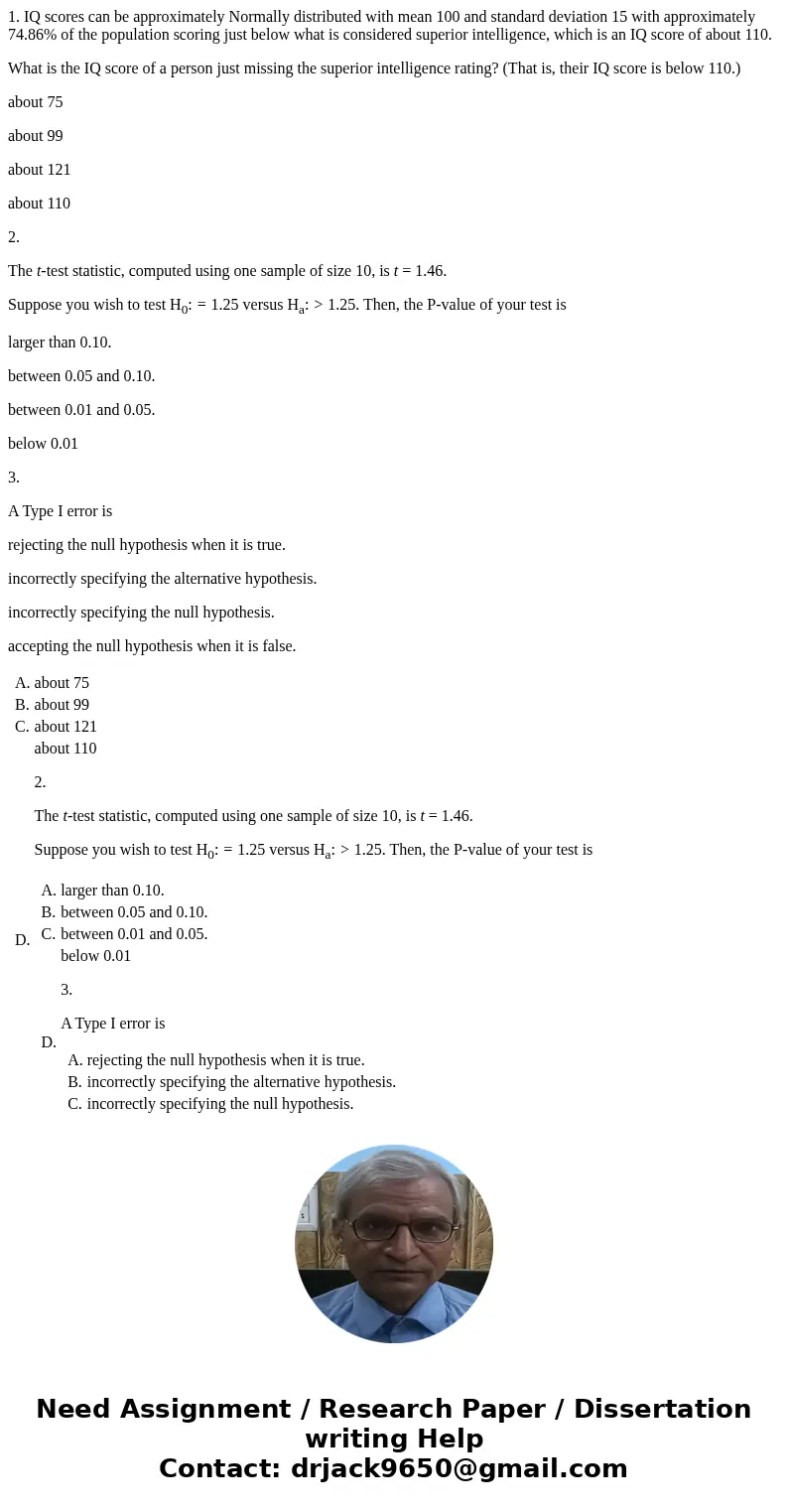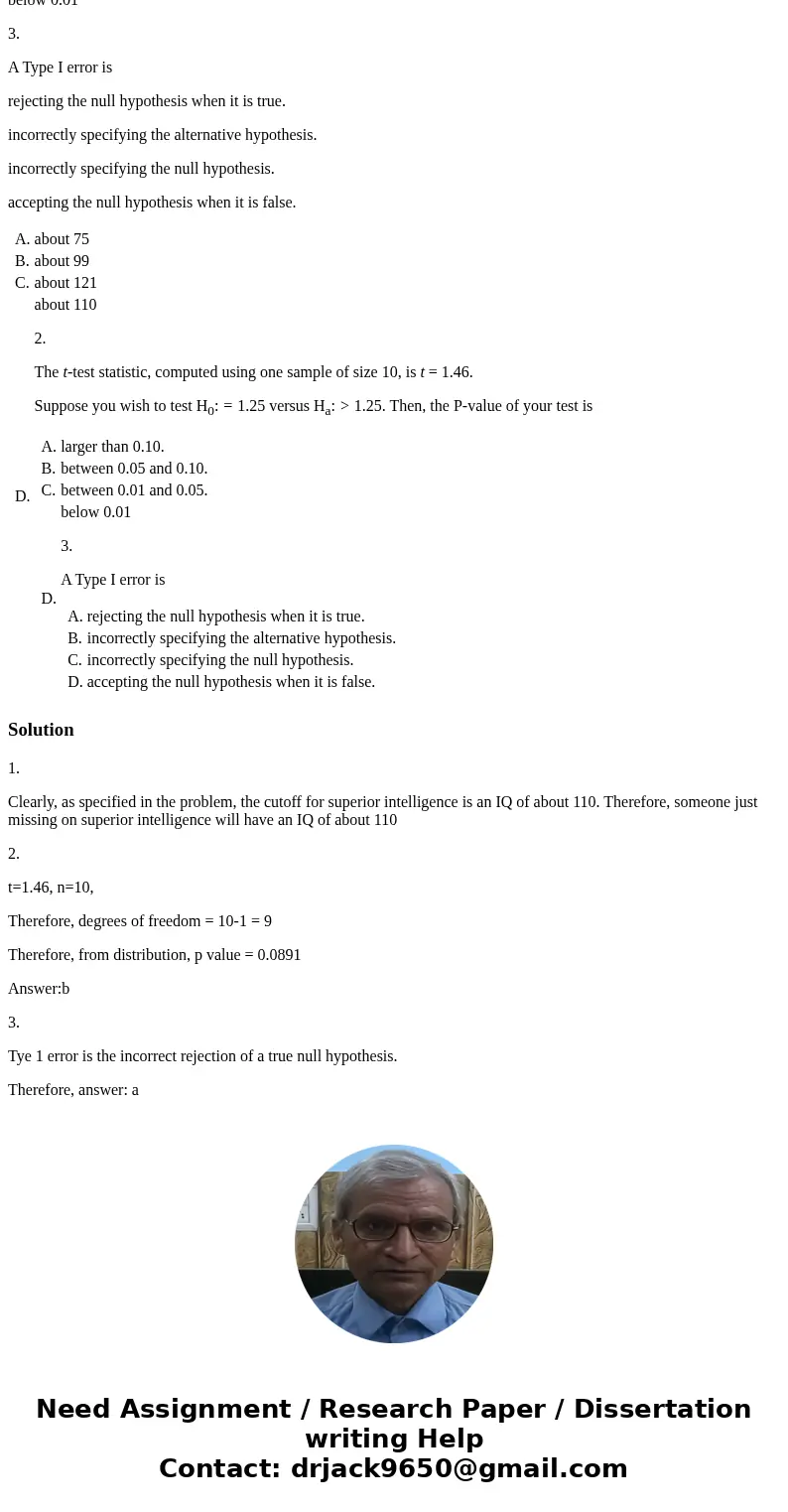1 IQ scores can be approximately Normally distributed with m
1. IQ scores can be approximately Normally distributed with mean 100 and standard deviation 15 with approximately 74.86% of the population scoring just below what is considered superior intelligence, which is an IQ score of about 110.
What is the IQ score of a person just missing the superior intelligence rating? (That is, their IQ score is below 110.)
about 75
about 99
about 121
about 110
2.
The t-test statistic, computed using one sample of size 10, is t = 1.46.
Suppose you wish to test H0: = 1.25 versus Ha: > 1.25. Then, the P-value of your test is
larger than 0.10.
between 0.05 and 0.10.
between 0.01 and 0.05.
below 0.01
3.
A Type I error is
rejecting the null hypothesis when it is true.
incorrectly specifying the alternative hypothesis.
incorrectly specifying the null hypothesis.
accepting the null hypothesis when it is false.
| A. | about 75 | |||||||||||||||||||||||||
| B. | about 99 | |||||||||||||||||||||||||
| C. | about 121 | |||||||||||||||||||||||||
| D. | about 110 2. The t-test statistic, computed using one sample of size 10, is t = 1.46. Suppose you wish to test H0: = 1.25 versus Ha: > 1.25. Then, the P-value of your test is
|
Solution
1.
Clearly, as specified in the problem, the cutoff for superior intelligence is an IQ of about 110. Therefore, someone just missing on superior intelligence will have an IQ of about 110
2.
t=1.46, n=10,
Therefore, degrees of freedom = 10-1 = 9
Therefore, from distribution, p value = 0.0891
Answer:b
3.
Tye 1 error is the incorrect rejection of a true null hypothesis.
Therefore, answer: a


 Homework Sourse
Homework Sourse